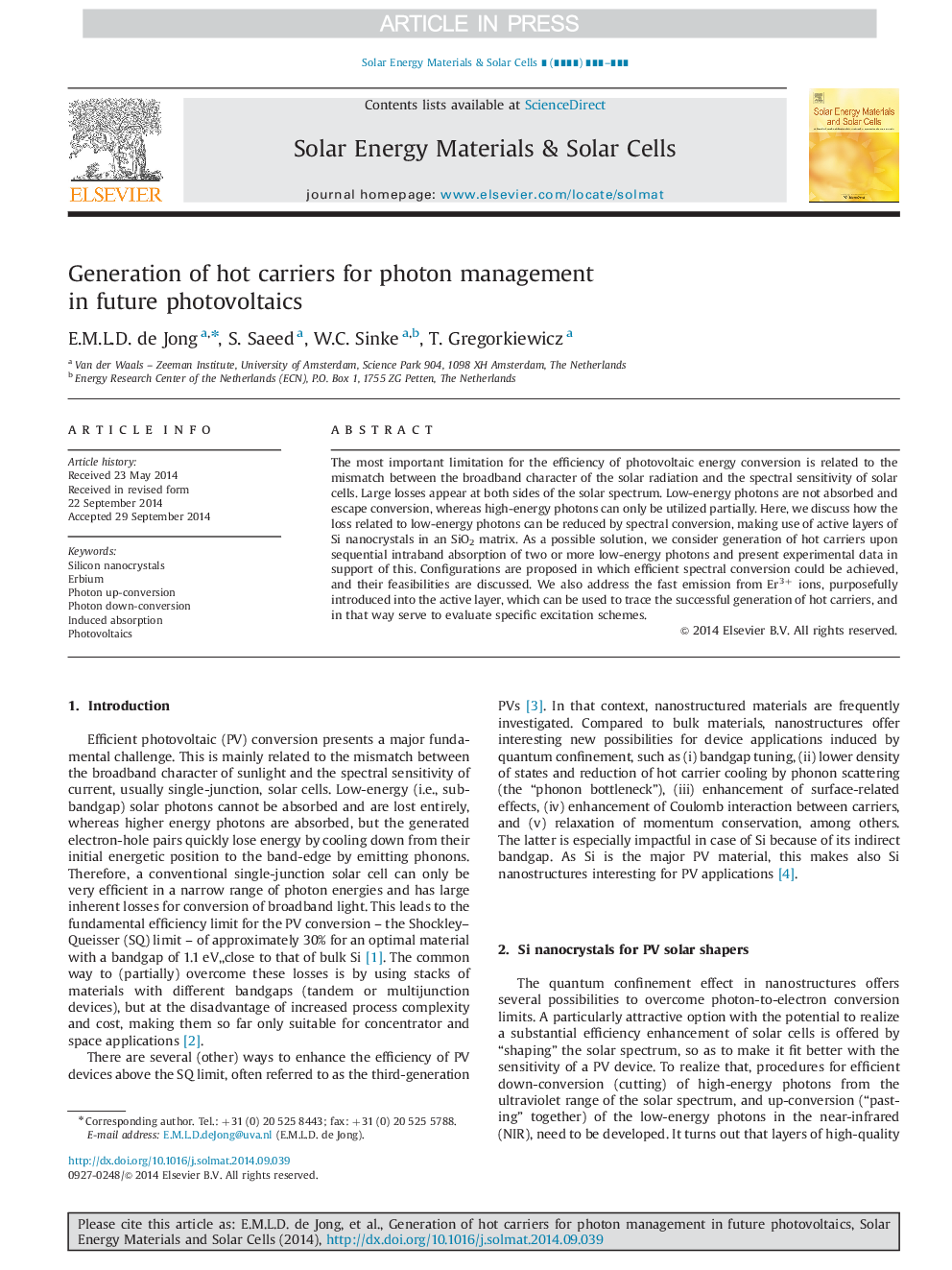| Article ID | Journal | Published Year | Pages | File Type |
|---|---|---|---|---|
| 6535247 | Solar Energy Materials and Solar Cells | 2015 | 5 Pages |
Abstract
The most important limitation for the efficiency of photovoltaic energy conversion is related to the mismatch between the broadband character of the solar radiation and the spectral sensitivity of solar cells. Large losses appear at both sides of the solar spectrum. Low-energy photons are not absorbed and escape conversion, whereas high-energy photons can only be utilized partially. Here, we discuss how the loss related to low-energy photons can be reduced by spectral conversion, making use of active layers of Si nanocrystals in an SiO2 matrix. As a possible solution, we consider generation of hot carriers upon sequential intraband absorption of two or more low-energy photons and present experimental data in support of this. Configurations are proposed in which efficient spectral conversion could be achieved, and their feasibilities are discussed. We also address the fast emission from Er3+ ions, purposefully introduced into the active layer, which can be used to trace the successful generation of hot carriers, and in that way serve to evaluate specific excitation schemes.
Related Topics
Physical Sciences and Engineering
Chemical Engineering
Catalysis
Authors
E.M.L.D. de Jong, S. Saeed, W.C. Sinke, T. Gregorkiewicz,
